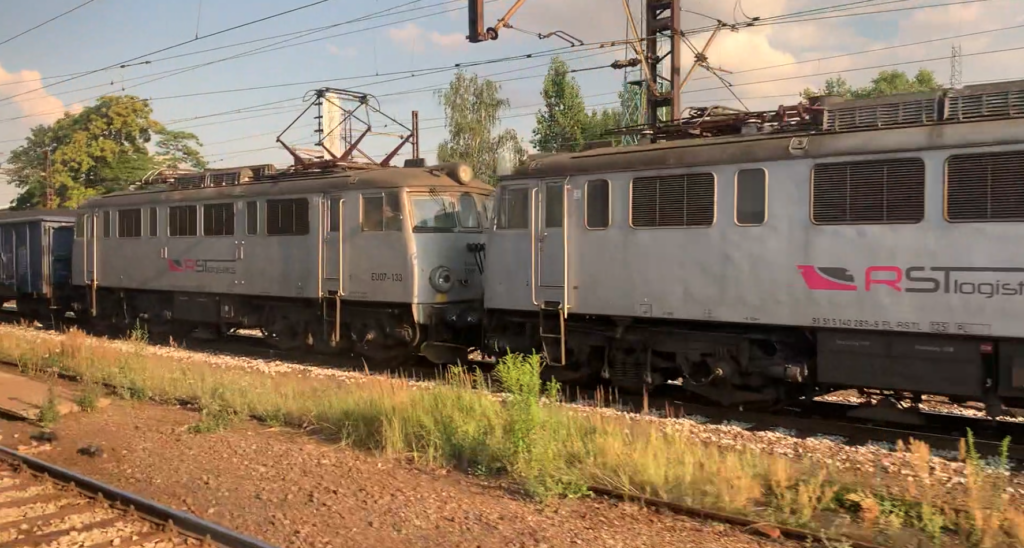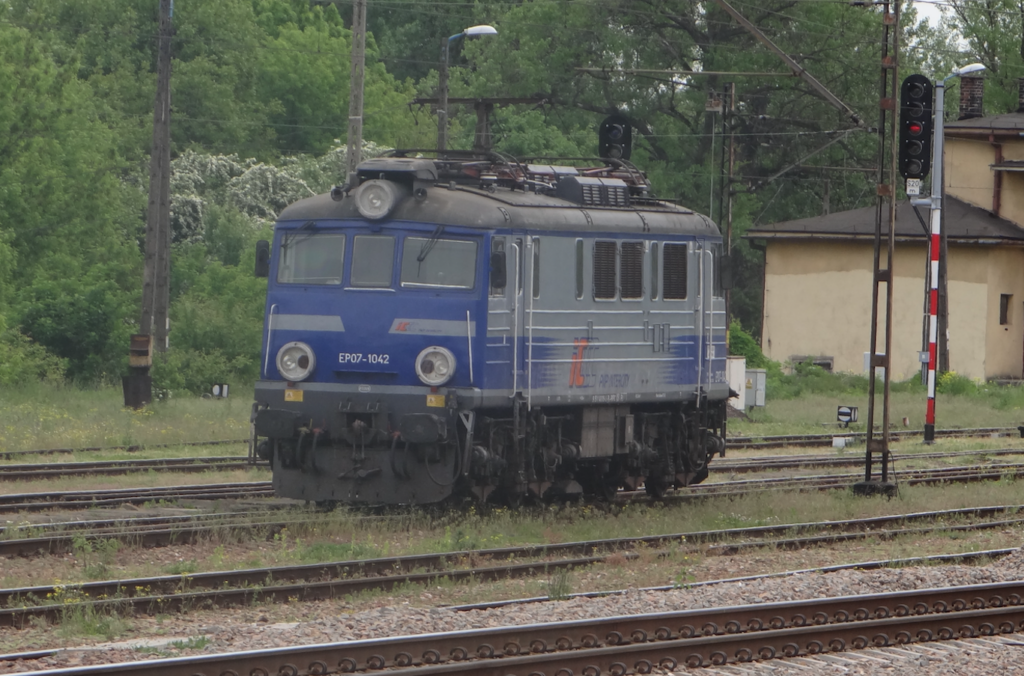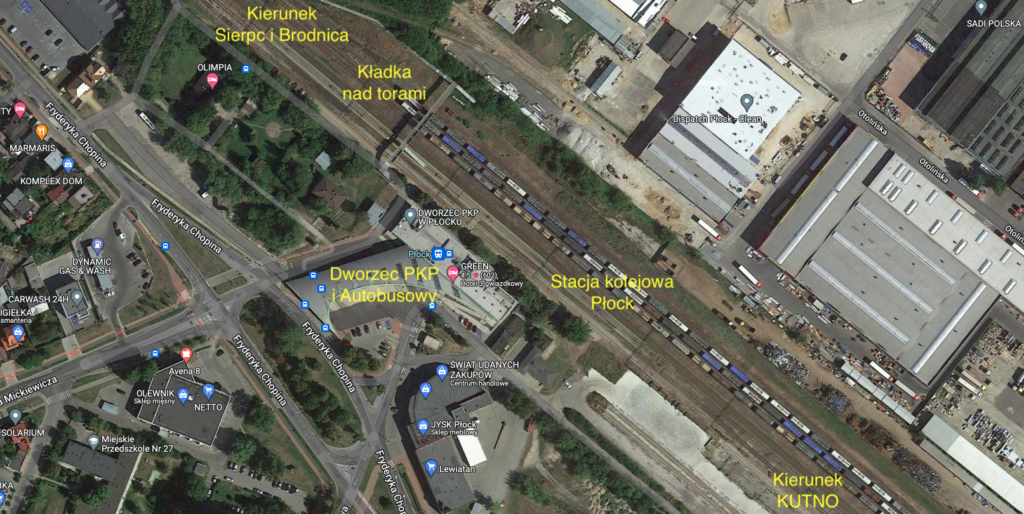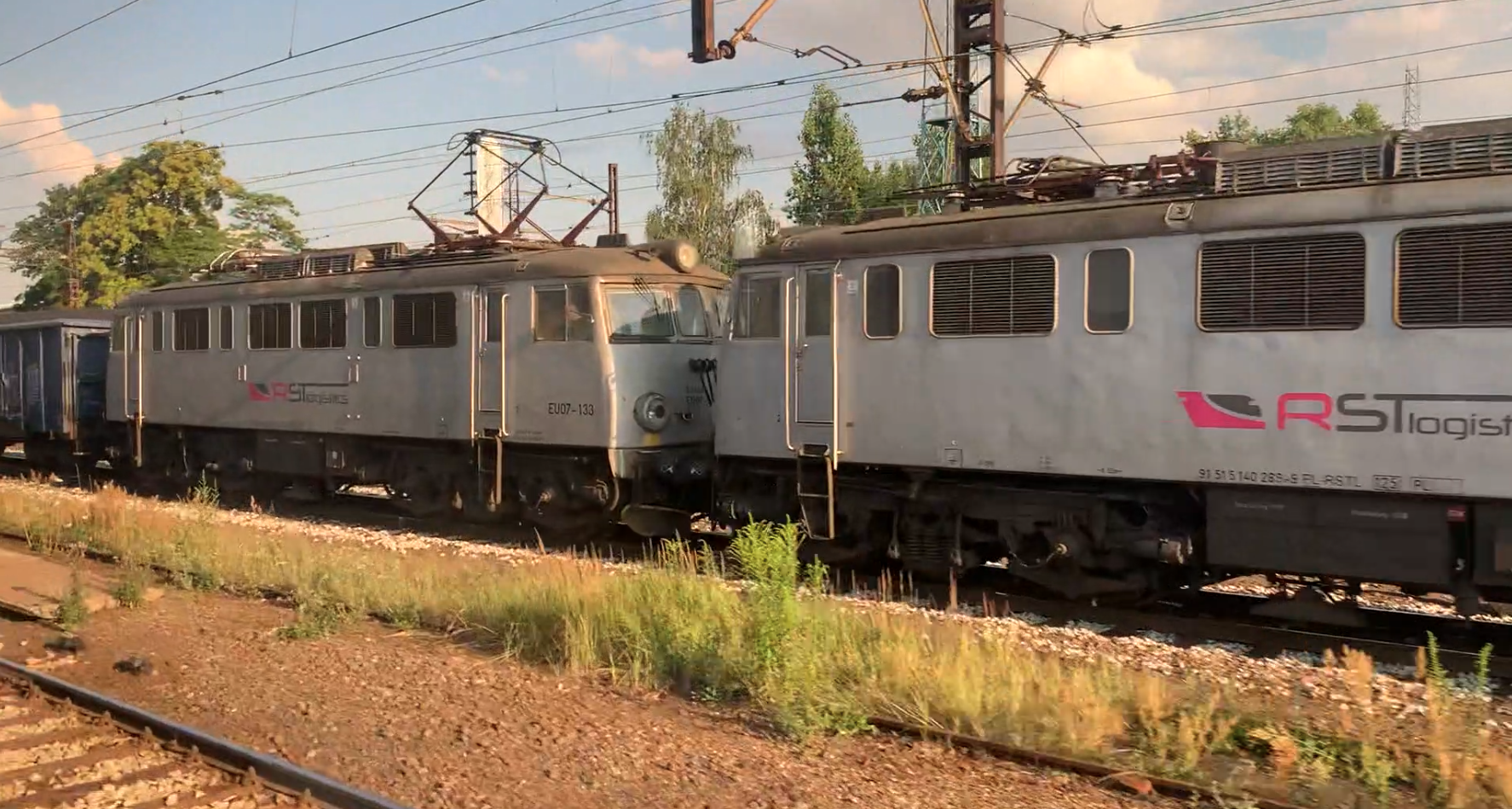Płock 2022-12-06
Płock Railway Station.
Płock is a Polish city with a 1,000-year history and was also the capital of Poland. Płock is a large city in central Poland, currently a county. The city is located in the Dobrzyń Lake District, in the Płock Valley, on the Vistula River, in the Masovian Voivodeship. Fighter pilot Jan Zumbach, commander of the legendary 303 Squadron, was a resident of Płock.




Płock’s bridges across the Vistula.
In Płock, the first known bridge was built in 1410 to carry the Polish Army on its way to the Battle of Grunwald. It’s possible that temporary wooden bridges were also built later, primarily for troop crossings. Ferries have certainly been operating across the Vistula since the 16th century.
The first well-known and documented bridge was a wooden skate bridge, built in 1838. A skate bridge is a wooden bridge supported by boats called skates. The bridge was dismantled for the winter to prevent the spring ice from damaging it. In 1888, the cities of Płock and Włocławek swapped skate bridges. The Włocławek bridge was newer but narrower. The bridge served the residents of Płock until the outbreak of the Great War, which was started by the Germans. The bridge was destroyed in August 1914 by Muscovite troops. During the Great War, a temporary wooden bridge was built for the army. But this bridge, too, was destroyed.
In May 1916, the Germans built another wooden bridge. No residents of Płock attended the grand opening. The bridge was supported by 12 stone piers, in front of which ice floe fenders were built. This bridge survived until the time of Poland’s rebirth. The bridge was regularly renovated due to natural wear and tear. The bridge was planned to be dismantled after the metal bridge was completed. This was not done because the Germans and Muscovites invaded Poland.
The metal road-rail bridge was built in December 1938. It was a very modern structure, with trusses placed under the roadway, allowing for future widening. In September 1939, the bridge was partially destroyed by the Polish Army. In 1944, it was rebuilt by the Germans and blown up again on January 20, 1945. The bridge was rebuilt in June 1950 and named after the “Józef Piłsudski Legions.” In 1977, the road-rail bridge underwent a major renovation. During the renovation, the army built a temporary bridge. The bridge underwent another renovation in 1994. A temporary bridge was once again prepared for the duration of the renovation. Such renovations are not uncommon. Bridges are renovated as the weight of trucks and freight trains increases. The last renovation was carried out in 2005. Since 2009, the bridge has been illuminated in three colors, reflecting the colors of the city flag: yellow, red, and blue. It is the longest colorful bridge illumination in the world, with a length of 690 meters.
The new bridge over the Vistula River was built as part of the eastern bypass of Płock, along National Road No. 60. In 2007, it was officially opened, along with the access roads. The bridge was named “Solidarity Bridge.” It has two 65-meter pylons, from which five spans are suspended by cables, including the longest main span in Poland, spanning 375 meters. This design makes it the longest bridge in the world. The new bridge is 1,200 meters long and 27.5 meters wide, and features a sidewalk, a bicycle path, and four traffic lanes.
PKP Płock.
Geographic coordinates: 52.552N 19.714E. Elevation 106 m. Address: Dworcowa Street 46, 09-402 Płock. The railway station in Płock is located high above the rest of the city.
The second half of the 19th century in Europe saw the dynamic development of railways. But not in every region. At that time, Płock and most of Mazovia were under the rule of the Muscovites. At that time, the Muscovite state was incompetent and in constant crisis. The Muscovites did not view railways as an opportunity for development and improving the lives of their citizens, but as an element of military strategy. Therefore, they treated every railway line as a potential for a lightning attack by the enemy. As a result, the railway network in Mazovia was limited. Furthermore, no railway line was connected to a city as large as Płock. Only after Poland regained independence in 1918 did construction of a railway line from Kutno to Płock begin. On January 15, 1922, the 46 km, single-track section between Kutno and Płock Radziwie was opened. Płock Radziwie station lies on the left bank of the Vistula River. This provided Płock with a rail connection to Warsaw and southern Poland. Residents of Płock still had to cross the bridge over the Vistula River. The station’s opening on January 15, 1922, was the first technical opening. The final grand opening took place on October 25, 1925. Since then, residents of Płock have been able to commute to Warsaw by rail.
On November 19, 1934, the 35 km, single-track section between Płock and Sierpc was opened. This track allowed rail travel from Płock northward, towards Grudziądz, Olsztyn, and Gdańsk. The next section, Sierpc-Brodnica, opened on September 25, 1937.
The Płock Radziwie railway station and the Płock railway station had no rail connection because there was no railway bridge over the Vistula River. Design work on a new bridge began in 1930. The road-rail bridge over the Vistula River was built and officially opened in December 1938. This completed the missing 6.5 km of track. The first trains ran along the line in December 1938.
It’s worth noting that the railway line in Płock had to be built around the Vistula escarpment. Therefore, after crossing the Vistula, the tracks turn right toward the east. Then, the tracks turn left toward the northeast, and after about 1 km, left again toward the northwest, reaching Płock station.
Płock’s new rail connection was short-lived, as the German army invaded Poland, along with the Soviet army. During the defensive war, the Polish Army blew up one span of the rail-road bridge to impede the advance of the German plague. In 1944, the bridge over the Vistula was repaired. However, on January 20, 1945, the German army blew up the bridge to impede the advance of the Soviet army. War-ravaged Poland lacked the resources to immediately rebuild the bridges destroyed on the Vistula. The bridge in Płock was rebuilt in June 1950.
In 1948, the Kutno-Płock Radziwie railway line was number 418, and the Płock-Sierpc-Brodnica line was number 416. After the bridge over the Vistula was rebuilt, the Kutno-Płock-Sierpc-Brodnica section was assigned number 33. The entire line was built as a single-track line, but all engineering structures were prepared for the construction of a second track. In 1977, a second track was opened on the Płock Radziwie-Łąck section. To date (2022), no second track has been built along the entire route. Currently, the entire No. 33 Kutno-Brodnica railway line is 142.847 km long. In recent years, the route has been systematically modernized. In 2021, after a long-term suspension of traffic on the Płock-Brodnica section, passenger traffic resumed along the entire route. The maximum speed is 100 km/h, but it’s possible to increase it further, as the route runs along very long, straight sections. Numerous rail-road intersections pose a significant problem, as residents are accustomed to light rail traffic, especially on the Płock-Sierpc-Brodnica section.
The entire Kutno-Brodnica railway line No. 33 was to be electrified. The first section, Kutno-Florek, was electrified on May 31, 1980. On November 27, 1984, the Florek-Płock-Trzepowo section was electrified. This allowed the refinery in Płock to be served by electric traction. The remaining line has not yet been electrified.
Płock railway station became a local railway hub. A railway siding was expanded from Płock Radziwie station to the port, where the Płock Radzicie Port railway station was established. The Płock station also had a railway siding to the Płock Harvesting Machine Factory industrial area and a siding to the military unit (Wacław Lechmana Street). The refinery was built concurrently with the construction of the Płock Trzepowo railway station, north of the city. Railway sidings to the refinery and petrochemical plant depart from this station.
PKP Płock is the largest railway station in Płock. It is located approximately 1 km from the city center, on Dworcowa Street. In 2019, the station served approximately 500 passengers daily. The railway station is located on the southern side of the station, facing the city. The building was built in 1935, in accordance with contemporary standards, and remains in use to this day (2022). The railway station building also serves as a bus station. Access to the station is excellent. The station is accessed via Dworcowa, Adama Mickiewicza, and Fryderyka Chopina Streets. In 2014, the station building underwent a major renovation costing 15 million złoty. The station is open during the day and closed at night. Currently, from Płock you can reach: Gdynia InterCity “Flisak”, Katowice InterCity “Flisak”, Katowice InterCity “Chemik”, Warszawa Wschodnia Koleje Mazowieckie “Mazovia”, Kutno 9 Koleje Mazowieckie trains, Sierpc 10 Koleje Mazowieckie trains. In total, there are 23 trains per day. The “Flisak” train is interesting, as it operates a diesel locomotive (usually Czech Draha No. 749) on the Płock-Gdynia section, and an electric EU07 or EP07 locomotive on the Płock-Katowice section. At the same time, trains from opposite routes meet at the Płock station, where they switch locomotives.
The station has two platforms and three platform edges. Access to the platforms is provided by a footbridge over the tracks. The station still has functioning signal signals. Rail traffic is controlled from a single signal box.
It’s worth remembering that Płock also had a narrow-gauge railway. One ran to the Borowiczki sugar factory, which connected to the standard-gauge line near the crossing on Bielska Street. The other connected the Płock Radziwie station with the paper mill in Soczewka.
Written by Karol Placha Hetman
